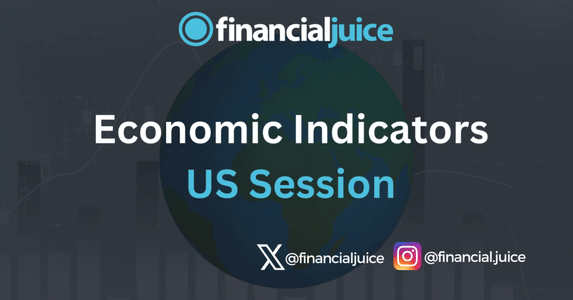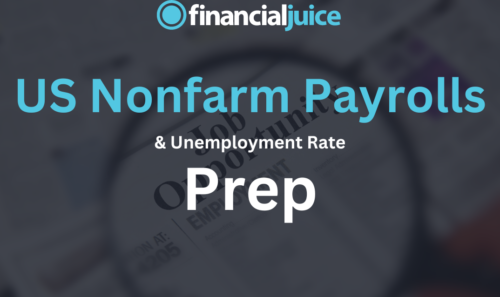
Week Ahead: Economic Indicators (US)
Hey, Traders!
For the June 24th week, here is a list of all of the major economic indicators being released during the US Session, with a brief synopsis of what they represent and what to possibly expect from the markets in reaction.
Tuesday 25th June
08:30 ET
Canadian CPI for May
The Canadian Consumer Price Index measures the average change over time in the prices paid by consumers for a basket of goods and services.
Published monthly by Statistics Canada, it includes categories like food, housing, transportation, and healthcare.
The CPI is a key indicator of inflation, reflecting the cost of living and purchasing power. It helps guide economic policy decisions and adjust income payments, such as pensions and wages, to maintain their real value.
What to Expect
If inflation comes in higher than expected, this would cause markets to push back bets on further BoC rate cuts, as it would feed into the narrative that interest rates need to stay higher for longer to tame inflation.
If realized, this could cause strength in CAD and weakness in Canadian stocks.
The opposite is also true if it comes in lower than expected, this could confirm for the markets that inflation is moving back to target, which could prompt further BoC rate cuts, which could cause strength in Canadian stocks and weakness in CAD.
10:00 ET
US CB Consumer Confidence for June
The US CB Consumer Confidence Index is a monthly economic indicator published by The Conference Board.
It measures the confidence of American consumers in the economy based on their perceptions of current economic conditions and their expectations for the future.
This index is derived from a survey that assesses consumers’ attitudes about business conditions, employment, and income.
Higher confidence levels indicate optimism about the economy, which can lead to increased consumer spending and economic growth, while lower levels suggest pessimism and potential reductions in spending.
What to Expect
At this stage in the economic cycle, It is not common for the consumer confidence report to produce a market reaction without a large deviation from the forecast.
Having said that, the conference board also release survey results on 1-year ahead inflation expectations, which the market may take note of when trying to determine inflation’s position on the path back to the 2% target.
If higher, we could see some weakness in US stocks and strength in the dollar, and the opposite could be true if it comes in lower.
Wednesday 26th June
10:00 ET
US New Home Sales for May
US New Home Sales is a monthly economic indicator that measures the number of newly constructed single-family homes sold during the month.
Reported by the US Census Bureau and the Department of Housing and Urban Development (HUD), this metric provides insights into the health of the housing market and overall economic conditions.
An increase in new home sales suggests strong demand and economic growth, while a decrease can indicate potential economic weakness.
This data helps policymakers, economists, and investors assess the housing sector’s contribution to the economy.
What to Expect
The markets are unlikely to react to this data point without a large deviation.
Having said that, it is still; a useful indicator, as it paints a picture of consumer confidence and consumer spending, as a home is one of the largest investments the average American will make in their life.
Thursday 27th June
08:30 ET
US GDP Q1 3rd Estimate
US Gross Domestic Product measures the total value of all goods and services produced within the United States over a specific period, typically quarterly or annually.
It is a key indicator of economic performance and health.
US GDP includes contributions from consumption, investment, government spending, and net exports (exports minus imports).
Growth in GDP indicates an expanding economy, while a decline suggests economic contraction.
This measure is crucial for policymakers, economists, and investors to gauge economic strength, make informed decisions, and formulate economic policies.
What to Expect
At this stage in the economic cycle, the markets pay more attention to the development of price pressures than the headline GDP number, which is outlined in the quarterly PCE number and GDP price index released with this report.
If these come in higher than expected, you could expect some strength in the dollar and weakness in US stocks.
The opposite would be true if they were to come in lower than expected.
US Durable Goods May Prelim
The US Durable Goods Orders Preliminary Report provides early estimates of orders for long-lasting manufactured goods, such as machinery, appliances, and transportation equipment. This data is an indicator of business investment and consumer confidence, as durable goods purchases typically require a significant capital outlay and reflect long-term economic expectations. Higher-than-expected orders suggest potential economic growth and increased business activity, while lower-than-expected orders may indicate a slowdown in manufacturing and overall economic activity. Policymakers and investors analyse this report to gauge the health of the manufacturing sector and make informed decisions about future economic trends.
What to Expect
If durable goods come in higher than expected, this could also mean there is higher consumer demand for durable goods, possibly leading to an upside risk for inflation. This could mean strength in the dollar and weakness in US stocks. If it comes in cooler than expected, the opposite could be expected.
US Weekly Initial & Continued Jobless Claims
The US Weekly Initial and Continuing Jobless Claims report provides data on the number of individuals who have filed for unemployment benefits for the first time (initial claims) and those who continue to receive unemployment benefits (continuing claims) in the United States. These figures offer insights into the labor market’s health, indicating trends in job losses and unemployment rates.
What to Expect
If initial and continuing jobless claims come in higher than expected, this shows that there are more people filing for unemployment benefits in the US. This could lead to strength in US stocks, and weakness in the dollar because it could be a downside risk to inflation. The opposite could also be true if it came in lower than expected.
Friday 28th June
08:30 ET
US PCE Price Index for May
The US Personal Consumption Expenditures Price Index measures the average change in prices paid by consumers for goods and services over time.
Published monthly by the Bureau of Economic Analysis (BEA), it is a key indicator of inflation.
The PCE Price Index includes all consumption expenditures and is considered more comprehensive than the Consumer Price Index (CPI). The “core” PCE Price Index, which excludes food and energy prices due to their volatility, is closely monitored by the Federal Reserve to gauge underlying inflation trends and guide monetary policy.
What to Expect
If PCE inflation comes in higher than expected, this will show that inflation is still sticker than expected, and could feed into the higher-for-longer narrative for US interest rates, which could cause strength in the dollar and weakness in US stocks.
The opposite is also true, if inflation is shown to come in lower than expected, then this could cause strength in US stocks and weakness in the dollar, as it shows that inflation is continuing its path back to the Fed’s 2% target, which could push forward bets on Fed rate cuts this year.
US Consumer Spending for May
US Consumer Spending measures the total value of goods and services purchased by households. It accounts for approximately 70% of the US GDP, making it a key indicator of economic health.
Reported monthly by the Bureau of Economic Analysis (BEA), it includes spending on durable goods (e.g., cars, appliances), nondurable goods (e.g., food, clothing), and services (e.g., healthcare, education).
Trends in consumer spending provide insights into consumer confidence and economic growth.
What to Expect
Higher consumer spending can be seen as an upside risk to inflation, as it indicates that there is high demand for goods and services, which can push prices higher.
This means if consumer spending comes in higher than expected, we could see weakness in US stocks and strength in the dollar and weakness in US stocks
However, it is worth considering that this comes out with the PCE report, and is likely to be overshadowed by this.
But if the PCE inflation numbers come in lower, and consumer spending comes in higher, than this would be a solid report, as it could show that corporate profits may be positively affected, while inflation still comes in lower, which could cause strength in US stocks and weakness in the dollar.
10:00 ET
University of Michigan Sentiment June Final
The University of Michigan Consumer Sentiment Index measures the confidence of US consumers in the economy. It is based on a survey that assesses consumers’ perceptions and expectations regarding their personal finances, business conditions, and overall economic prospects. A higher sentiment index indicates increased confidence, which can positively impact consumer spending and economic activity, while a lower index may suggest reduced confidence and potential economic caution.
What to Expect
Consumer sentiment is watched by markets to assess consumer resilience in a high-interest-rate environment. Elevated sentiment may suggest strong demand, potentially leading to inflationary pressures, but it could also signal consumer resilience, reducing recession fears. In this release, the market focus has been on the 1 & 5-year inflation expectations accompanying the sentiment data.
Higher inflation expectations may delay Fed rate cut expectations, affecting US stocks negatively and strengthening the dollar. If the inflation expectations come in lower than expected, the opposite could be true.





